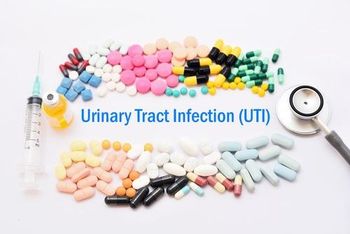
Lyme Disease: Theories for Longer-Term Manifestations
Peter L. Salgo, MD: Most patients who have Lyme disease get diagnosed with Lyme disease, get treated for Lyme disease, and clear the infection quickly. Somebody comes in with the symptoms of infection, which has been associated with a Lyme disease diagnosis, they get antibiotics. Most of them get better. Is that fair?
Leonard Sigal, MD: It depends on the manifestation you’re talking about. If you’re talking about erythema-migrans, I think everybody on this panel would agree: if somebody comes in with erythema-migrans, you give them antibiotics for however long you decide you want to treat—2 weeks, 4 weeks—and most of those people will get better.
Samuel Shor, MD, FACP: The majority will, but in John Aucott’s SLICE study, 39% at 6 months were still ill.
Leonard Sigal, MD: Well, what do you mean by “ill?”
Samuel Shor, MD, FACP: And he did not look at markers for activity of disease. So, I’m not saying by that statement that they were all still infected, but I would argue that, given the studies by Embers and Hodzic, etc, there’s persistence. There’s evidence in the literature of persistence through the standard antimicrobials.
Leonard Sigal, MD: The very first descriptions of Lyme disease being treated with antibiotics in the United States—because it was treated with penicillin in the 1950s in Sweden—the first evidence of antibiotic sensitivity, from Allen Steere and Stephen Malawista, supported that a significant proportion, up to 50% of patients, was still symptomatic in some way for as long as 6 months after their treatment.
Samuel Shor, MD, FACP: Right. But the question is, how many of them are actually infected, and that’s to be determined.
Robert C. Bransfield, MD, DLFAPA: There were different studies. There were 2 that showed 28% had significant symptoms; one showed 63%. So, there’s a variation. Again, it gets back to definition that people don’t agree on. I think there are some people who get infected, have a natural resistance to it, and even without treatment, they do okay.
Leonard Sigal, MD: Until they present with something else.
Robert C. Bransfield, MD, DLFAPA: And they may carry it in a latent way for years. And years later, it appears after an auto accident or something in their body, something like chicken pox, where it comes up as shingles. I think the co-infection is a complicated thing. It can be a complex interactive infection, not all of which we understand—coinfections with other tick-borne pathogens, or non—tick-borne pathogens that might be in the body and are opportunistic, like viruses.
Peter L. Salgo, MD: Let me put it as clearly as I can, because I think we want to parse this out. If you have an initial diagnosis, let’s say we’ve made the diagnosis of a Borrelia infection. We’ll call that Lyme disease, the Borrelia infection…
Leonard Sigal, MD: Well, it’s Borrelia burgdorferi, because there are other Borrelia.
Peter L. Salgo, MD: There is Borreliosis.
Patricia V. Smith: Or Borrelia mayonii.
Peter L. Salgo, MD: Forget those. We’re talking about Borrelia burgdorferi. They treat it with antibiotics, and let’s say, for the sake of argument, that this person then continues to have symptoms. Are a significant number of people continually infected or are their symptoms merely autoimmune manifestations of a previous infection, the infectious portion of which is now gone?
Leonard Sigal, MD: I have to disagree with you when you use the term “autoimmune.”
Peter L. Salgo, MD: OK, an immune response, not autoimmune.
Leonard Sigal, MD: Or an inflammatory reaction. Autoimmunity is a very specific phenomenon, and there’s no evidence to suggest that patients with Lyme disease have autoimmunity based on prior Borrelia burgdorferi.
Peter L. Salgo, MD: Let me try this again. I told you this was going to get interesting. If we talk about these ongoing symptoms after what should have been—theoretically, perhaps not—an effective course of antibiotics, is it that there is active infection that is persistent or is it that there is an inflammatory response? Is that fair that it is not related to active infection but is something related to the previous infection that’s ongoing?
Leonard Sigal, MD: And there’s a third potential phenomenon, and that is, a person has Lyme disease, the person is treated—whether or not they still have active infection or debris is not the issue—but they have something else that is not related to Lyme disease. As an example, there’s a recent paper by Allen Steere’s group at the Massachusetts General Hospital where patients with Lyme disease that has been treated and apparently cured have developed rheumatoid arthritis, have developed psoriatic arthritis, and have developed what’s called seronegative spondyloarthropathies, like ankylosing spondylitis. There’s no evidence to suggest active infection. These people meet American College of Rheumatology criteria for those diagnoses, and they don’t respond to antibiotics.
Peter L. Salgo, MD: But is that related to Lyme disease? People get these diseases who don’t have Lyme disease.
Leonard Sigal, MD: That’s exactly my point.
Robert C. Bransfield, MD, DLFAPA: It’s a comorbid condition. Let me go back to your immune issue. It seems like there’s provocation to the immune system. Now, with a normal infection, you get early inflammation, then adaptive immunity, and that’s it. And then you’re fine. So, with this, what seems to happen is inflammation persists, there is an adaptive immunity, and there may be some autoimmune-type symptoms that persist in some people.
Leonard Sigal, MD: But why are you implicating autoimmune?
Robert C. Bransfield, MD, DLFAPA: Because you see some things; for instance, obsessive compulsive disorder. And you can see an abrupt onset that may follow 2 weeks after an infectious exposure.
Leonard Sigal, MD: So, that’s tissue damage, that’s inflammation. There are any one of a number of potential explanations, but as an immunologist, I don’t see how you necessarily implicate autoimmunity as being the underlying mechanism.
Robert C. Bransfield, MD, DLFAPA: I think it’s less common than inflammatory mechanisms.
Leonard Sigal, MD: But what evidence do you have that there is autoimmunity?
Robert C. Bransfield, MD, DLFAPA: Well, people found antibodies. But the timing goes, for instance, 2 weeks after infection, where there’s an abrupt increase. This is most prominent with some of the OCD cases, where there can be a sudden increase of symptoms that can correlate with when antibodies are produced. That would suggest it.
Leonard Sigal, MD: But the correlation is not causation.
Robert C. Bransfield, MD, DLFAPA: Not for sure. But let me get back to the greater point that I wanted to make: that it’s more the immune provocation symptoms, whatever we call them, that are associated with the manifestations of the disease. And if the immune system is being provoked, something is provoking it. Now, it might be infection, it might be something else.
Leonard Sigal, MD: It could be debris from the organism. That has also been described.
Robert C. Bransfield, MD, DLFAPA: Yes, but it seems like it’s cleared rather quickly.
Leonard Sigal, MD: I must disagree with you. Linda Bockenstedt and her group at Yale have demonstrated quite clearly that when you take mice and treat them with antibiotics, there’s no live organism left, and yet there’s debris that persists—Borrelia burgdorferi-derived debris—which is going to be a proinflammatory nidus.
Robert C. Bransfield, MD, DLFAPA: I don’t think it would last that long, and you see this persistent inflammatory reaction associated with symptoms. Now, it does seem like the people who have been adequately treated don’t have disease progression; it’s more static. They have the same symptoms they had; they don’t keep getting worse. But there’s this other group that keeps getting worse and worse with time. The symptoms they have get worse, and they get new symptoms. The disease keeps expanding with time. So, therefore, you’re thinking that something is provoking the immune system and increasing over time. What is it? Now, persistent infection is one of the possibilities. We can consider other possibilities, too, but that’s what concerns us.
Newsletter
Stay ahead of emerging infectious disease threats with expert insights and breaking research. Subscribe now to get updates delivered straight to your inbox.










































































































































































































































































































